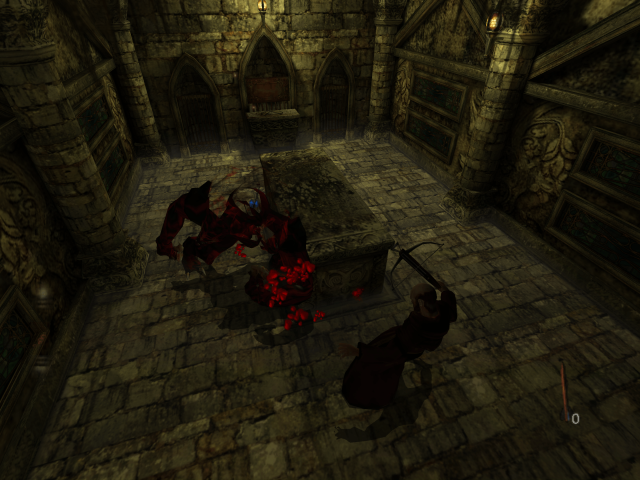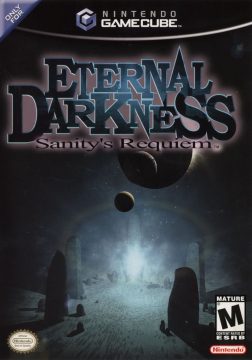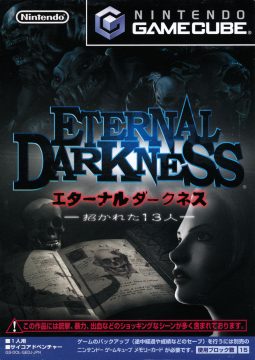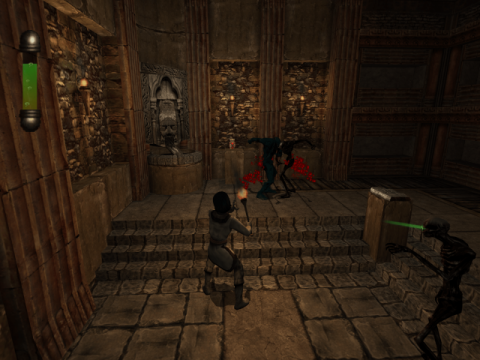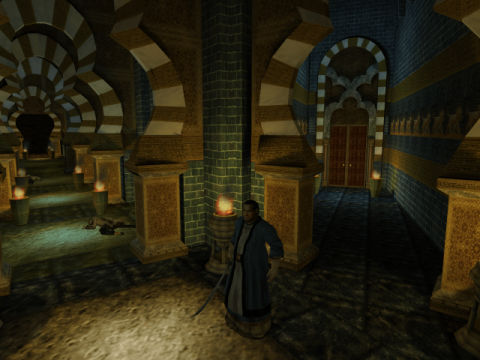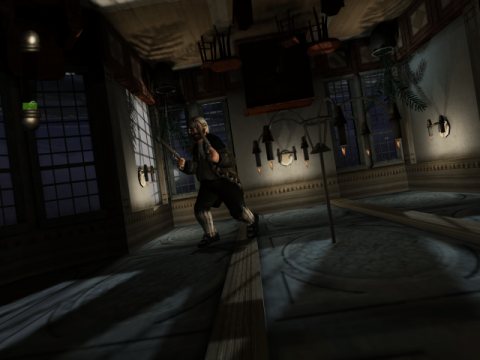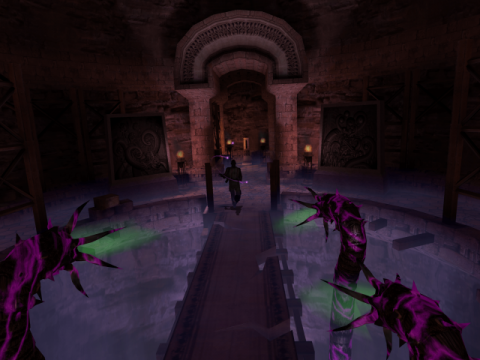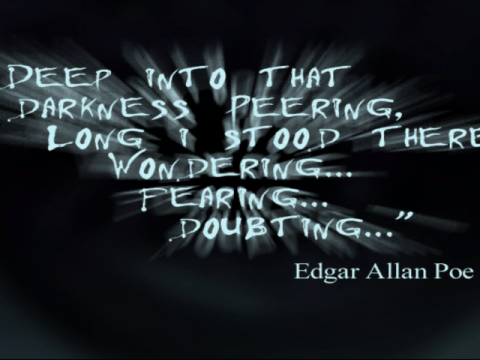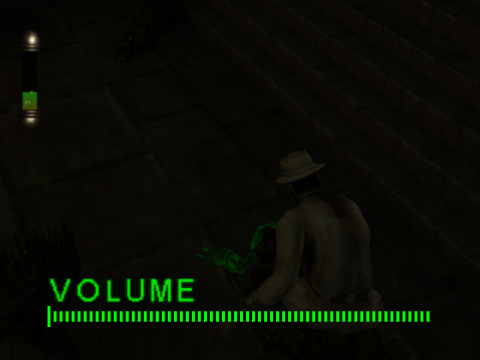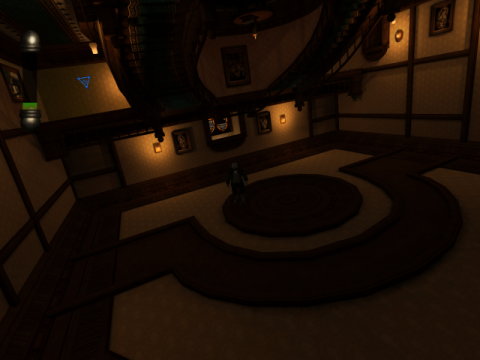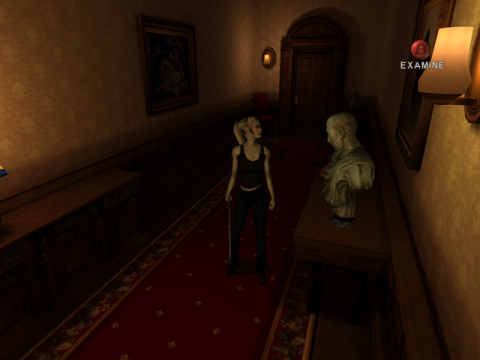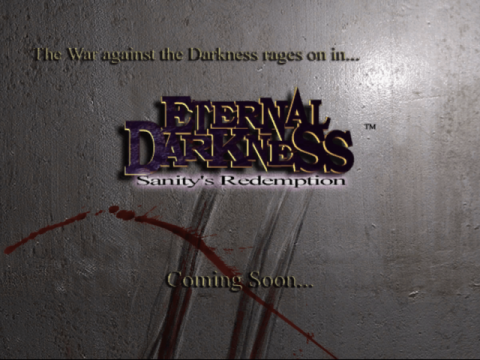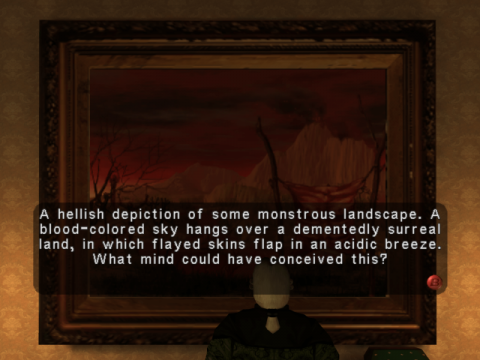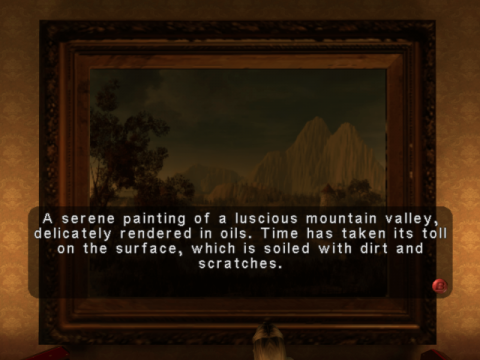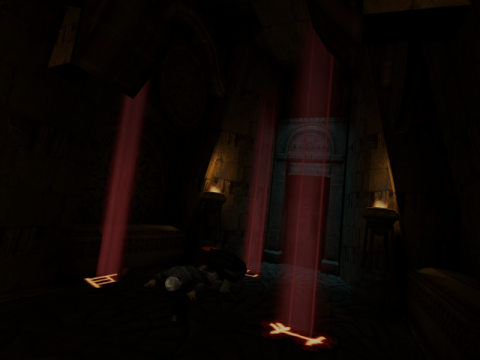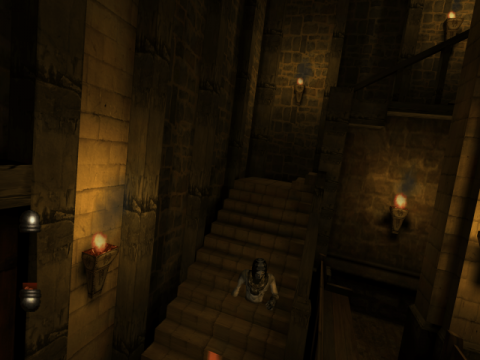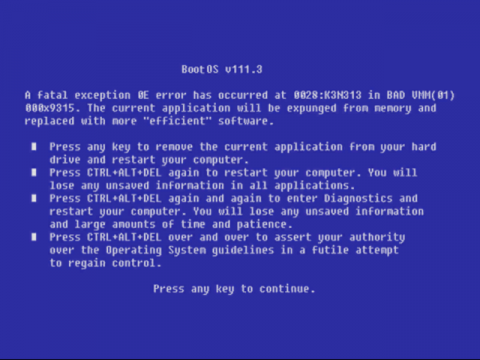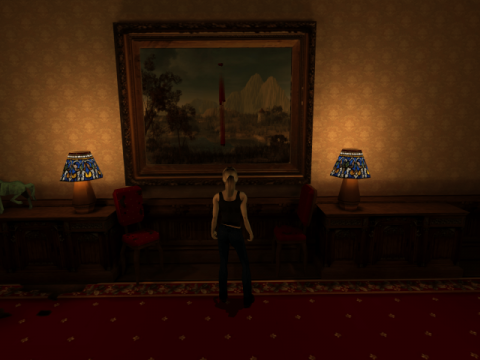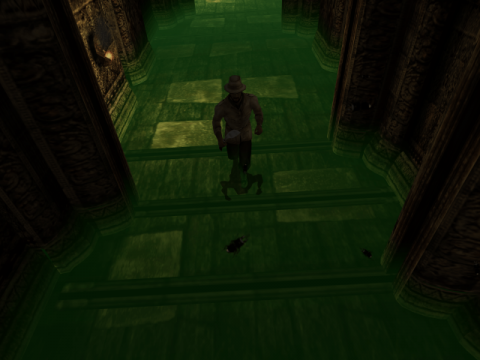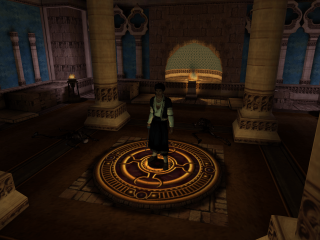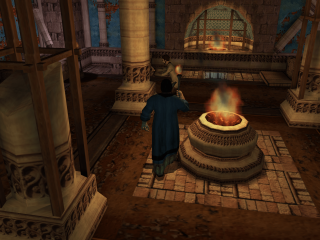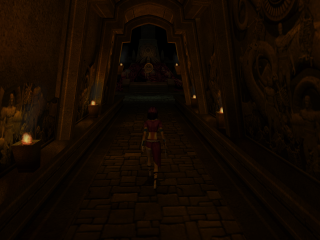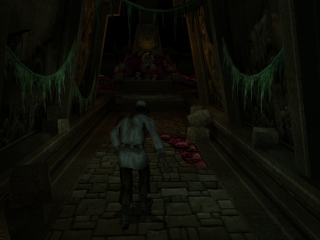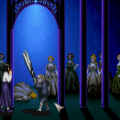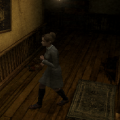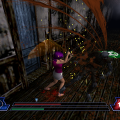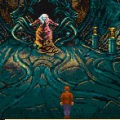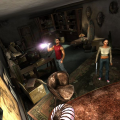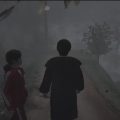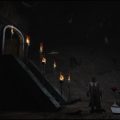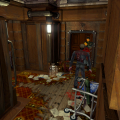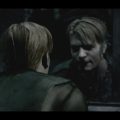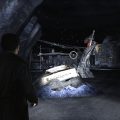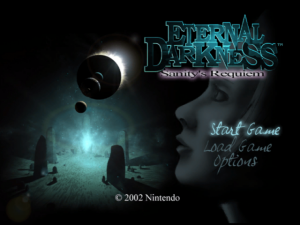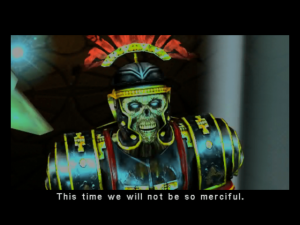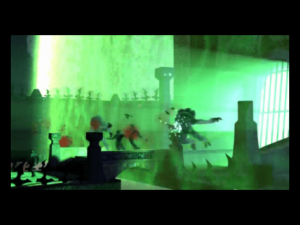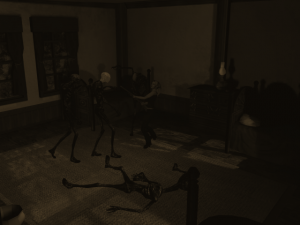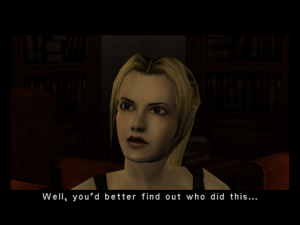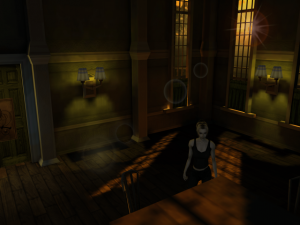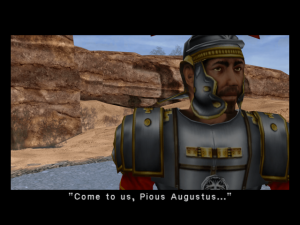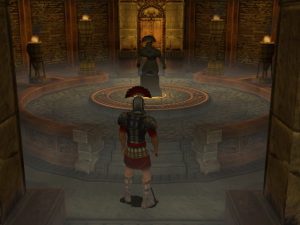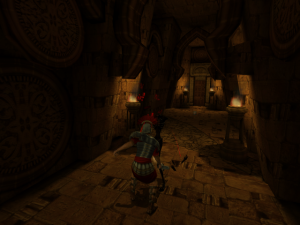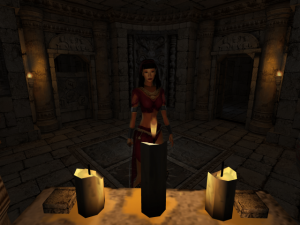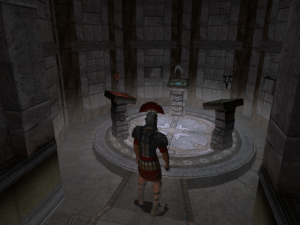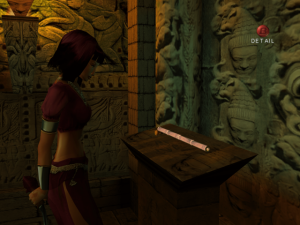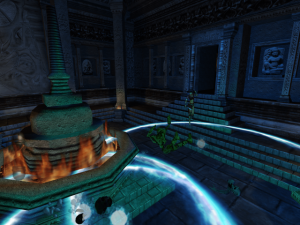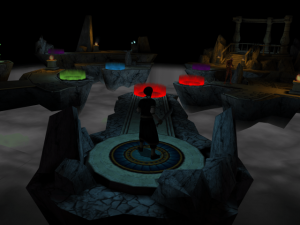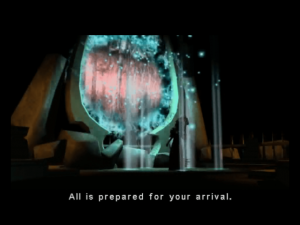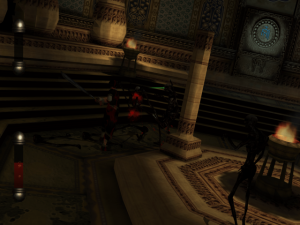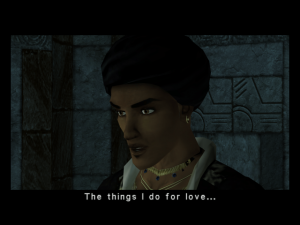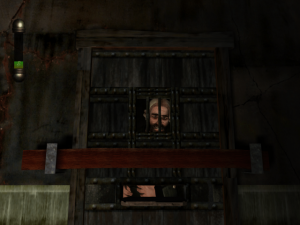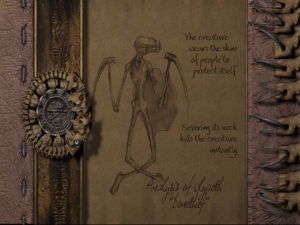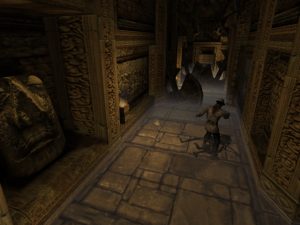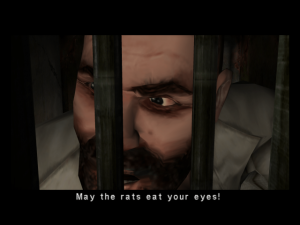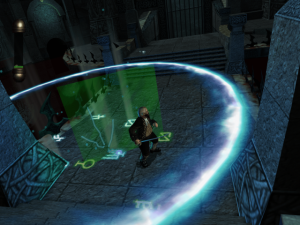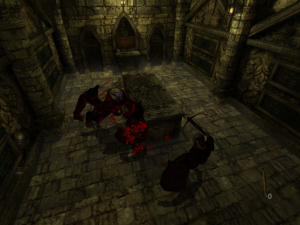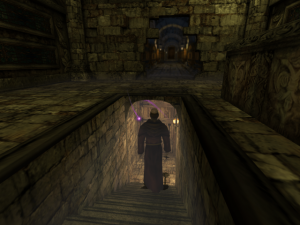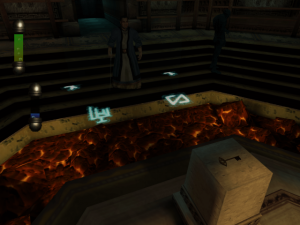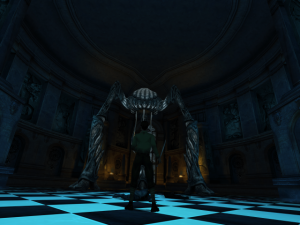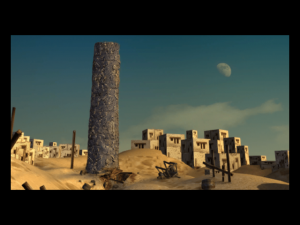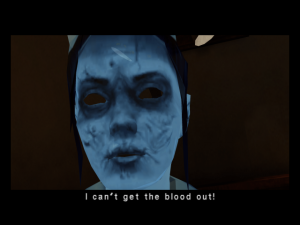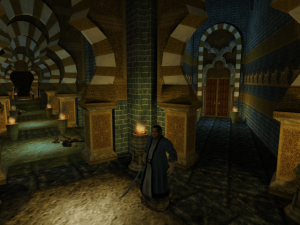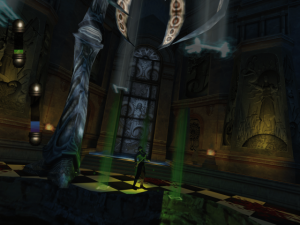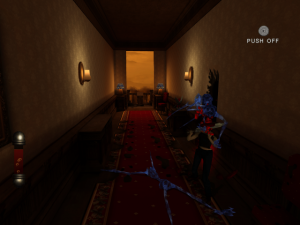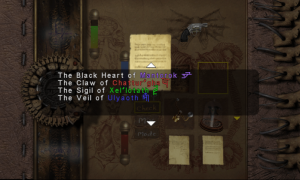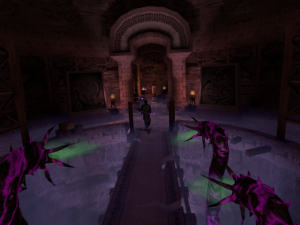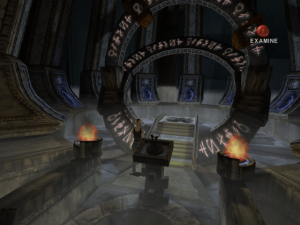Nintendo has cultivated a family friendly image throughout the company’s existence. Even as they tried to soften that image during the 16-bit era, most mature or adult titles were third party releases on the SNES or the N64, save for the odd release from Rare. By the time the GameCube rolled around, they loosened even further, courting remakes of Resident Evil and Metal Gear Solid, as well as publishing their first ESRB Mature-rated title with Eternal Darkness in 2002. The game, designed by Canadian studio Silicon Knights, was a twist on survival horror, with a focus on the lurking fear of the unknown. One of the largest game that Silicon Knights worked on and a more direct foray into the more adult titles for Nintendo, Eternal Darkness is a notable game for both companies, however much it languishes today.
The story begins with a death in the family. Alex Roivas gets a late night call from the police, informing her that the grandfather who raised her, Edward, has been murdered in a most brutal fashion. After searching his estate, she discovers a mysterious book bound in human flesh, The Tome of Eternal Darkness, and unravels the vast influence of sinister beings dubbed Ancients playing out their world-ending plans across time and space. Four in total and represented by different colors, these Eldritch horrors form a rock paper scissors of power with each other, with one standing in the middle as an arbiter of sorts. Along the way, Alex reads about the exploits of other humans from all around the world, playing their part in unraveling the Ancients’ plans. The concept is basically “H. P. Lovecraft 101” with the terror of these elder gods lurking in the shadows, though it predates many of the actual Cthulhu games.
The plot is rather ambitious, resembling the average Assassin’s Creed story, several years before UbiSoft’s series even existed. Real life history & figures intersect with the macabre, haunted fiction of the game. The cast is large and diverse, with 12 playable characters, all voiced by a host of familiar voice talent, and despite each chapter focusing on one person, they leave an impression, some more than others. It’s less goofy than a standard Resident Evil plot, while also being much broader & interconnected than the personal narratives of Silent Hill games. Originally in development for the Nintendo 64, it was moved to the GameCube where it was set to be released in 2001, and then it was pushed back and cuts were made, both due to time and in light of the September 11th terrorist attacks. A character based on an actual Knights Templar from the Crusades was replaced, Arabic text was scrubbed from textures, and a planned 5th Ancient was dropped, with its design ideas absorbed into the others.
The game plays roughly similar to other horror games of the time. Characters can attack an enemy’s head, two arms, and torso. This adds some strategy, since a headless zombie will flail about or an armless zombie will have a hard time attacking. Players collect runes to unlock spells that can restore health & sanity, provide a shield, and summon enemies to control. However, characters feel too weighty in their attacks. It’s also too easy for enemies to hit players out of their attacks, with walls being a problem if the player is too close when using a melee weapon. Characters become winded and needed a rest after running. How far they can go varies by character, similar to Silent Hill‘s protagonists, with younger ones able to push farther running than older folks. One of the most unique enemies, a scorpion-like creature called the trapper, is a bit of a nuisance. They react to noise, and teleport the player to a strange realm floating platforms when they hear them, which sounds clever. Having to find your way out of shifting teleporters and random enemies, however, quickly becomes tedious, especially in a room full of the little buggers.
Like its horror game kin, Eternal Darkness has some light puzzling to do. Characters have to submerge dirty necklaces in acid and adjust astronomical equipment to find the way forward. Some puzzles use the magic mechanic to reveal hidden paths, dispel barriers, or enchant items to open doors. Depending on an early choice of Ancient, the game plays out in three different paths, with the true ending accessible by finishing all three on the same save file. Each of the Ancients have their own style of enemies that pop up. Red enemies are able to regenerate limbs, green ones continuously zap the sanity meter, and blue ones will chain self destruct when killed. Other variations include small changes in FMVs and puzzles. For those who want to see the whole story, it can be a bit repetitive but doing so does provide the chance to see more sanity effects.
The sanity effects are the star of the show in Eternal Darkness. The designers at Silicon Knights gamified the idea of playing with the player. The lower the green bar in the upper right of the screen, the more chances for crazy things to happen, with sanity being restored by spells or finishing off enemies. Many effects are temporary surprises, usually long enough for players to figure out they’re being toyed with before resetting back to normal. The character will be standing on the ceiling after entering a new room, the game will abruptly end with an announcement for a sequel, or a blue screen of death error message will rear its head, for example. Others are more passive and persistent, like bugs crawling across the screen, a sudden pounding on the door, or blood dripping down a random wall.
The designers concocted a variety of these effects, and since they descend at any moment, they can be genuinely unnerving. You might pass by a painting to discover its previously bucolic setting has become a horrific fleshscape, or you might be trying to heal in the middle of a fight, only to have your character explode into gory bits before the spell finishes casting. Many of these effects required Silicon Knights to negotiate with Nintendo’s software standards, which is why the game opens with a quote from Edgar Allen Poe’s “The Raven” before the usual procession of logos & trademarks. Some sanity effects are a product of their time, however. When the game turns the volume down or when it switches to the wrong input, it uses neon green bold text, reminiscent of the common UI of CRT TVs. Naturally, the developers couldn’t have anticipated the future, but it does break the illusion, emulated on a modern display. And while the list of effects may be plentiful, it doesn’t take long to intuit when they’ll likely appear, lessening the surprise. In a clever touch, Alex’s own sanity takes a hit each time the game returns to her, signaling the toll the revelations take on her.
The game’s visuals really shine. The four locales – the moody Roivas Mansion in Rhode Island, USA, a trap-filled temple in Cambodia, a mysterious underground city in Iran, and a church in France – recur as the game progresses. While returning to the same handful of places may sound repetitious, the designers & artists put a lot of effort into making each return feel fresh. The mansion reveals new rooms & secret passages, the temple becomes overrun with vegetation, the underground city gets caught up in renovations & war, and the humble church blossoms into a full blown cathedral. Much of the texture work, modeling, and lighting holds up today. It all begs for a remastered version. What doesn’t hold up quite as well is the way the characters move. There’s lots of heavy looking animations that can give them an uncanny look, especially in cutscenes. They have their charms, but a quick glance at Metal Gear Solid: The Twin Snakes, another Gamecube title that Silicon Knights worked on, shows how much of a difference solid motion capture makes for games of this vintage.
The music and sound effects were composed by Steve Henfin, and the tone he strikes is ethereal and foreboding. Voices chant in a nondescript language over somber ambient backing. Different instruments are employed for the various settings and time periods, like flutes in the Cambodian temple or the sound of a church bell for the French cathedral. Losing sanity makes the music melt into a low discordant tone with piercing screams of terror becoming the choir. Perhaps the most iconic sound effects are the disembodied chanting of runes during a magic spell, with a different voice for each Ancient alignment. The game featured Dolby Pro Logic II support. Granted, it is not true surround sound, but for many, it was their first brush with such tech in a video game. The sanity effects leave a greater impression when the wails & knocks are coming from all around.
Eternal Darkness is a unique experience worth revisiting today. While games like Undertale or P.T. do the same 4th wall-breaking fun, they do so linearly, or as a one off spook. This game was built around sanity effects ambushing the player at any time. Perhaps unsurprisingly, it wasn’t a financial success. A follow up was rumored but never materialized. Silicon Knights went bankrupt in 2014, after years of self-inflicted legal trouble with Epic Games. Former members of the outfit formed a new studio and attempted to crowdfund a spiritual successor in 2013, but three failed campaigns and the co-designer pleading guilty to charges of child pornography shut those plans down. A game like this begs the question of what might have been, in more favorable circumstances. As it stands now, Nintendo’s patent on sanity effects expired at the end of 2021 and the company seem largely content to ignore its ownership entirely, even as it would likely do well on the blazingly successful Switch. Hope springs eternal, as they say, but who knows if the darkness will ever return again?
Sanity Effects
Environmental Comparisons
